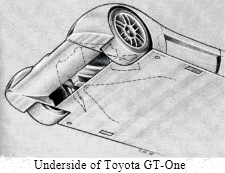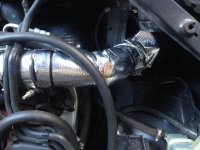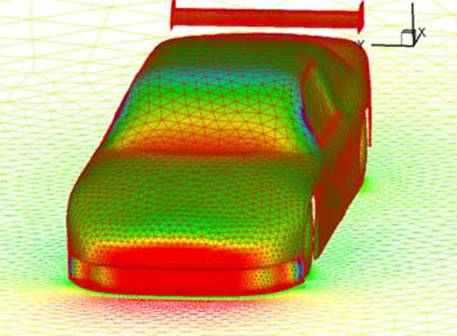You are using an out of date browser. It may not display this or other websites correctly.
You should upgrade or use an alternative browser.
You should upgrade or use an alternative browser.
Under the hood temperature regulation
- Thread starter Alin
- Start date
depending on how much money you want to spend; ceramic coat, header wrap, turbo blanket, or a combination. I've ceramic coated all my exhaust pieces and the hot side of the turbo. I also have a turbo blanket on my gt40. ive thought about using header wrap but im too lazy. besides, im running an fmic as well.
Header wrap really isn't a good idea unless you live in dry climates. Header wraps keep moisture in. If your outdoor temperature doesn't allow the wrap to dry up, then it will create potential weakening issues in the future.
Ceramic coating is the best. It's not cheap, but you have to remember that it also adds another protective layer against the elements to further increase life of the unit. Most people will usually coat the headers, uppipe and downpipe.
Blankets are the most cost effective way to reduce heat as they allow your metal to breath, not trapping moisture in.
I'm personally going the overkill route. Ceramic coating the headers, uppipe and downpipe. Blanket on the downpipe and turbo. Downpipe heatshield.
Ceramic coating is the best. It's not cheap, but you have to remember that it also adds another protective layer against the elements to further increase life of the unit. Most people will usually coat the headers, uppipe and downpipe.
Blankets are the most cost effective way to reduce heat as they allow your metal to breath, not trapping moisture in.
I'm personally going the overkill route. Ceramic coating the headers, uppipe and downpipe. Blanket on the downpipe and turbo. Downpipe heatshield.
Spamby
Meat Product Toy
Header wrap really isn't a good idea unless you live in dry climates. Header wraps keep moisture in. If your outdoor temperature doesn't allow the wrap to dry up, then it will create potential weakening issues in the future.
Ceramic coating is the best. It's not cheap, but you have to remember that it also adds another protective layer against the elements to further increase life of the unit. Most people will usually coat the headers, uppipe and downpipe.
Blankets are the most cost effective way to reduce heat as they allow your metal to breath, not trapping moisture in.
I'm personally going the overkill route. Ceramic coating the headers, uppipe and downpipe. Blanket on the downpipe and turbo. Downpipe heatshield.
The heat will vaporize moisture unless your speaking of it sitting and condensation.
What people don't know is that some wraps can have a mineral or iron content. These will react to dissimilar metals causing corrosion. The iron content can also rust do to moisture.
Actually a wrap is more impervious causing it to be more of a vapor barrier when compared to a woven wrap. It generally will not "breathe" like a fabric. In the case the wrap has a type of layer that allows this.
Definitely ceramic coating and then a layer of insulation would be the best and would help stop corrosion of the parts.
Spamby
Meat Product Toy
And just a tidbit for all, condensation forms when there is excess humidity and it comes into contact with a cooler surface. The warmer the air the more moisture it retains. When it comes into contact with a cooler surface, it forms water droplets.
How does this pertain to your wrapped pipes? The warmer air at the surface of the pipe or inside if it, reacts with the colder surface, the pipe surface or the blanket. It then forms the water droplets. Those droplets can saturate the covering until the engine is started and the hot pipes are allowed to vaporize the moisture.
How does this pertain to your wrapped pipes? The warmer air at the surface of the pipe or inside if it, reacts with the colder surface, the pipe surface or the blanket. It then forms the water droplets. Those droplets can saturate the covering until the engine is started and the hot pipes are allowed to vaporize the moisture.
Spamby
Meat Product Toy
Well,wrapped my intake in a Mylar fabric this weekend.
Had some downtime tonight so I did some reading. Found a thread on rennlist where a guy wrapped his intake pipes and found a 31* decrease in IAT at cruise on his 986.
He did several tests and tried to keep it as consistent as possible.
Had some downtime tonight so I did some reading. Found a thread on rennlist where a guy wrapped his intake pipes and found a 31* decrease in IAT at cruise on his 986.
He did several tests and tried to keep it as consistent as possible.
Alin
Diehard Car Enthusiast!
Well,wrapped my intake in a Mylar fabric this weekend.
Had some downtime tonight so I did some reading. Found a thread on rennlist where a guy wrapped his intake pipes and found a 31* decrease in IAT at cruise on his 986.
He did several tests and tried to keep it as consistent as possible.
And you didnt get pictures?!?!
Spamby
Meat Product Toy
I need to locate the conversation we were all having about a year ago, concerning airlflow under the hood
with a scoop, without a scoop, with a vent, etc. you get the picture. If anyone beats me to it, link it here.
with a scoop, without a scoop, with a vent, etc. you get the picture. If anyone beats me to it, link it here.
Here we go...
http://igotasti.com/vBforum/showthread.php?1707-Intercooler-FAQ/page5
http://igotasti.com/vBforum/showthread.php?1707-Intercooler-FAQ/page5
Something else to consider with a FMIC setup is the hood scoop. The scoop sucks in air and creates a low pressure zone. This then is sucked out and under the car. With the hood scoop installed you are dramatically limiting the amount of air flow you push through the front as the front of the engine tunes into a high pressure zone, forcing air away from it, meaning you get less efficiency (not positive about the zones but pretty sure I got it right). So basically if you are thinking of cost wise you need to add in the cost of a hood scoop delete, either a Impreza RS hood or a delete plate. Problem is most people would not even consider the air flow and just toss a FMIC on and call it good with the stock scoop still on and sucking in air.
^ That looks pretty good. I am under the assumption that my hood vent operates the same way. Maybe
not as well, but I suspect that the forward most lip creates a low pressure zone above the vent and aids
in evacuating the air from the engine bay.
I'm very interested in keeping heat under control but sometimes I think we focus on turbo blankets, header
wrap, etc. (which is great, don't get me wrong) while neglecting to consider airflow in the engine bay.
Here's a few pics...



not as well, but I suspect that the forward most lip creates a low pressure zone above the vent and aids
in evacuating the air from the engine bay.
I'm very interested in keeping heat under control but sometimes I think we focus on turbo blankets, header
wrap, etc. (which is great, don't get me wrong) while neglecting to consider airflow in the engine bay.
Here's a few pics...
attach some bits of string and test it out!
Hmmmm.....not a bad idea. I just might. If/when I do, maybe I'll mount my GoPro
on the outside and get a video of the results. I'm sure that would be easier than
trying to watch the string at ~100mph heading down an on-ramp. :lol:
I need to take some better pictures of the underside of my engine bay. Remember the convo we were having
about underbody trays, Grinder? I know I posted a couple pics, but they were difficult to see everything.
I wonder what effect my underbody tray has on engine bay cooling. It seems like it would limit the amount
of air getting in from underneath, of course. Though I would imagine that would force more air to be directed into
the engine by via the grill and FMIC.
about underbody trays, Grinder? I know I posted a couple pics, but they were difficult to see everything.
I wonder what effect my underbody tray has on engine bay cooling. It seems like it would limit the amount
of air getting in from underneath, of course. Though I would imagine that would force more air to be directed into
the engine by via the grill and FMIC.
Grinder34
Track Monkey
undertrays are good for just about everything from drag, downforce and engine bay cooling.
You can probably optimize for one or a combination of the above factors. Similar louvres on the undertray can help engine bay air evacuation:

Or for drag:

or for downforce:

Drag and downforce are similar, but not identical.
You can probably optimize for one or a combination of the above factors. Similar louvres on the undertray can help engine bay air evacuation:

Or for drag:
or for downforce:

Drag and downforce are similar, but not identical.
Similar threads
- Replies
- 0
- Views
- 466
- Replies
- 4
- Views
- 1K
- Replies
- 2
- Views
- 974



